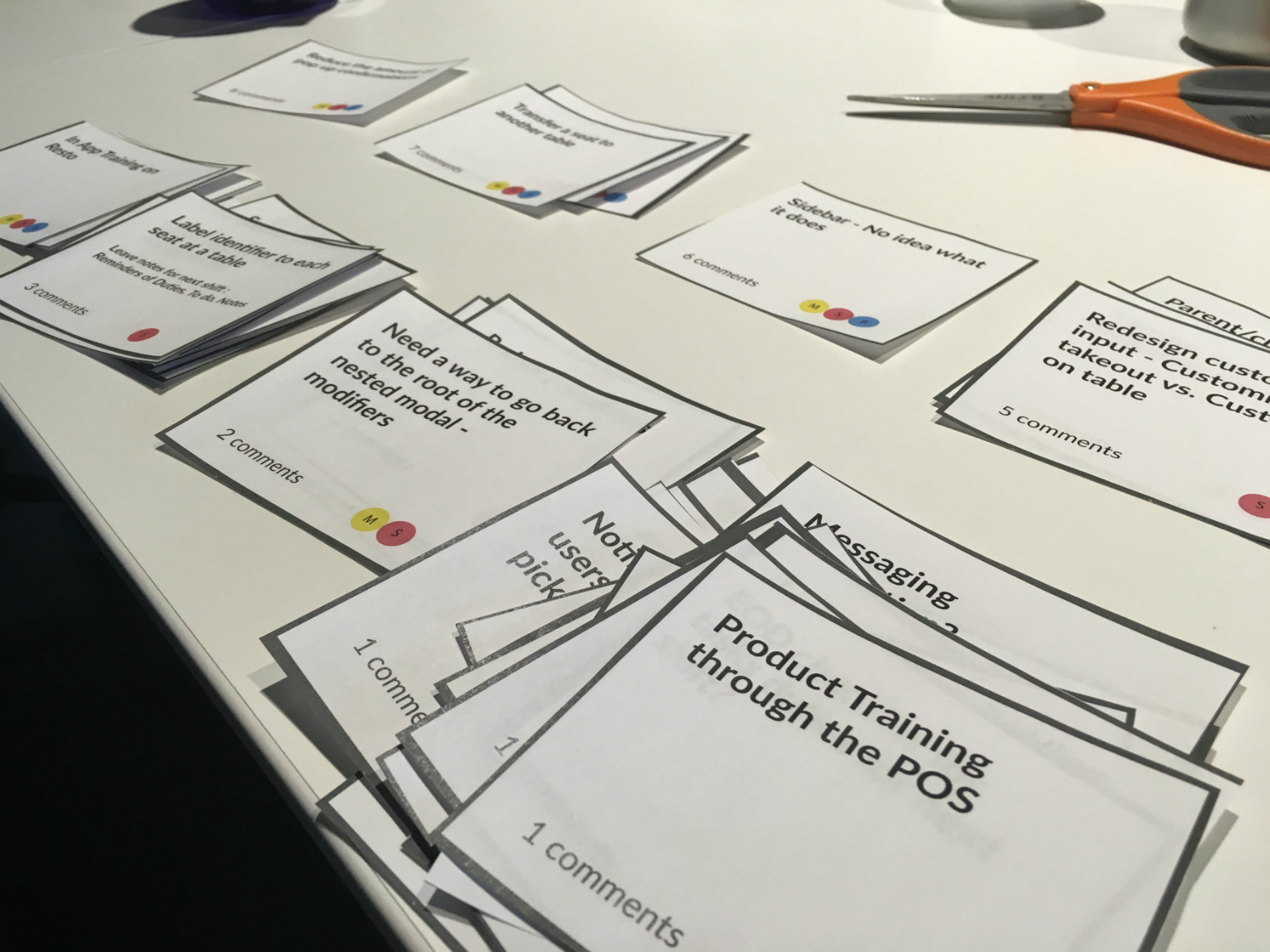
At Lightspeed, we work to design and build software that has purpose and solves problems. Sometimes, however, technical teams needs to step back and take a look at how customers truly interact with a product — and what can be done to improve that experience.
Some questions that we constantly have to ask ourselves: which features do customers love, which cause frustration and what can we do to make their lives easier? This is why we decided to run a customer engagement initiative; we wanted an opportunity to gain insight on our users, learn about who they are, how they use the product and what would help them work smarter.
Our plan was to learn more about our restaurant POS users; we interviewed 16 users across five local restaurants. Here was our process:
Preparing the team
First, we recruited several internal participants who were particularly interested in the engagement process. These participants represented a cross section of the company (Sales, Marketing, Support, Development, and Product Management), all bringing different perspectives to the Customer Engagement (CE) team. They were all trained on how to conduct an interview, what cues to look for and how to collect the data that was most valuable to our project. The CE team also learned how to facilitate an ‘experience mapping’ activity. Experience mapping involves separating out the typical work day of end-users task by task, delving into the tasks that were most useful for us to know about. This activity was a way to understand a day in the life of the user and identify their pain points and needs throughout a typical work day. By identifying their needs and getting feedback from a large subset of users, we could clearly see how the software we provide met their needs and helped them work more efficiently.
Meeting the customer
Once the CE team was trained, we reached out to customers that were interesting in speaking to us for at least an hour. We classified app users into three types (server/cashier, bartender, manager). Each of these user types was represented by a different post-it color. We interviewed at least four representatives from each user type, which ensured that we got a realistic understanding of that user type.
Each interview took approximately one hour to conduct. We had two CE team members per user so that one person could focus on note taking, while the other on the interview and making sure that all required topics were touched upon. Having two people makes sure that all the data is captured and the relevant questions were asked.

Data analysis
After each interview, the CE team gathered in a room where all of the information was unpacked. Each person would present their experience maps back to the team and the team would go over new pain points that were introduced. Following this discussion process, these were put onto an “aggregate board” with all user types represented in their color.
With all of the data up on the aggregate board, we found groups forming within the information that have been gathered. It became clear very quickly that recurring pain points were where we needed to focus our attention.
Prioritization
This data was brought to the Product Management team, who then prioritized the most frequently mentioned requests with help from the sales and technical support teams from across Lightspeed’s international offices. With this data prioritized, we were able to start working fixes and feature requests into our product roadmap.

The next step
Our next step will be closing the loop and showing prototypes to the end users in order to gather feedback on the new features and enhancements This will give us the insight we need on how they would use the feature and how it will impact their current workflow or pain points.
Overall the initiative was a great success. This process has been very informative, it helped us validate and prioritize some of our existing enhancements and feature ideas, de-prioritize others, and also brought many new issues to light. All participants have a new level of understanding of the end user and are able to utilize that in their everyday work.

News you care about. Tips you can use.
Everything your business needs to grow, delivered straight to your inbox.


